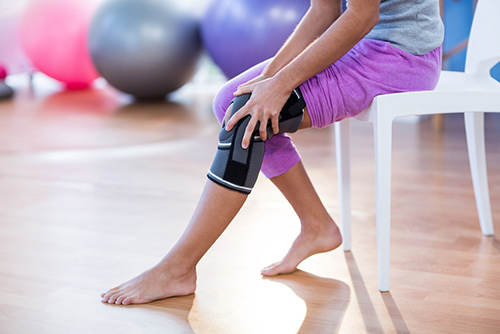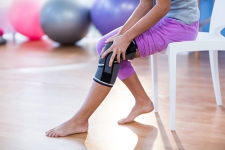
Do: Use Ice for Acute Injuries
If you have an acute injury, you need to ice it for the first 48 hours. Ice reduces inflammation and swelling and also alleviates pain. Put an ice pack on the injury for 10-15 minutes. Do this every two or three hours for the first two days.
Don’t: Use Heat for Acute Injuries
A heating pad feels great on an injured muscle or tendon, but it should not be used for an acute injury that is swollen. Swelling occurs due to bleeding in the tissue. Heat attracts more blood to the injury site, creating additional swelling. This could actually make your injury worse.
Do: Take Over-the-counter Anti-inflammatory Medication
During the first two days, you can take over-the-counter anti-inflammatory medication such as Ibuprofen to alleviate pain, discomfort, and inflammation. Follow the directions on the package so you do not take too many pain relievers. Anti-inflammatory medication is hard on your stomach so you don’t want to overdo it.
Don’t: Take Blood Thinners
Some over-the-counter medications thin the blood. Aspirin and other medications can lead to additional bleeding and make it difficult for your injury to heal.
Do: Rest
You need to rest your injury to promote healing. If possible, elevate the injury site while resting it so the excess fluid will drain from the area.
Don’t: Avoid Activity Completely
While resting is important, you can make matters worse if you never move. Consider doing some light walking or another activity while recovering from an injury. Choose something that doesn’t aggravate the injury.
Do: See a Doctor if the Injury Doesn’t Heal
Some injuries heal within a few days while others linger. If your injury is not healing on its own, you need to see a medical professional. You might need diagnostic testing to reveal the severity of the injury. Your doctor will then create a treatment plan that will likely include physical therapy.
Don’t: Sit Your Recovery Out
It would be wonderful if doctors could wave magic wands across the injury site to heal patients. Unfortunately, though, the process is more complex and requires patient participation. You will need to complete your physical therapy exercises in the office and at home. These exercises can be somewhat uncomfortable, but they will help you regain function. You will also need to follow your doctor’s expert advice to help you avoid reinjuring yourself.
Do: Tell Your Doctor if the Pain Is Getting Worse
Your doctor needs constant feedback when treating an injury. If you are asked to do something that makes the pain significantly worse, speak up. Fighting through the pain is part of the recovery process, but severe pain could be a sign that something else is going on. Your doctor needs to know that so he or she can modify the treatment plan if necessary.
Don’t: Ignore Your Emotions
Recovering from an injury can be an emotional experience. It’s hard to watch on the sidelines while everyone else is enjoying life. Be honest about the emotions that you feel. Realize that it is OK to be emotional during this time, and discuss your feelings with a medical professional.
Get on the Road to Recovery
Recovering from injuries takes time, but you can speed up the process by keeping these do’s and don’ts in mind. These tips will help you heal faster so you can go back to enjoying your life.

